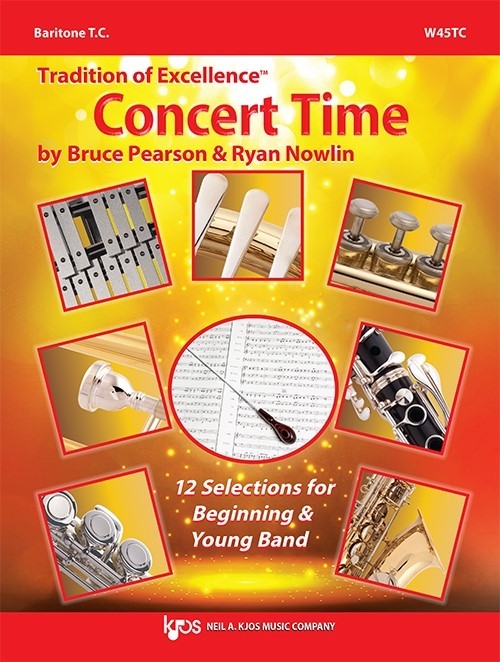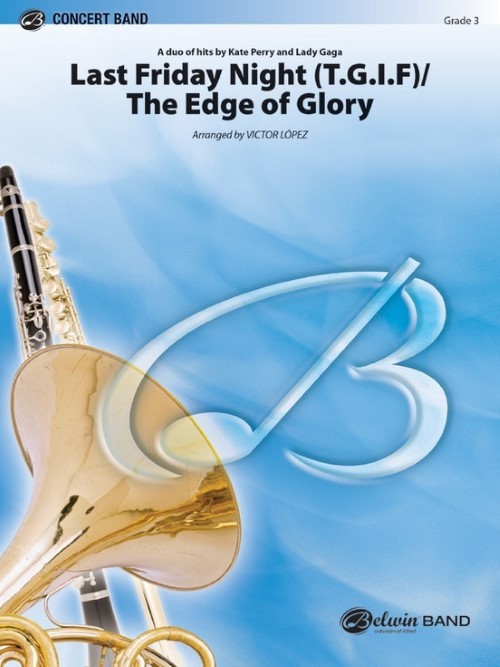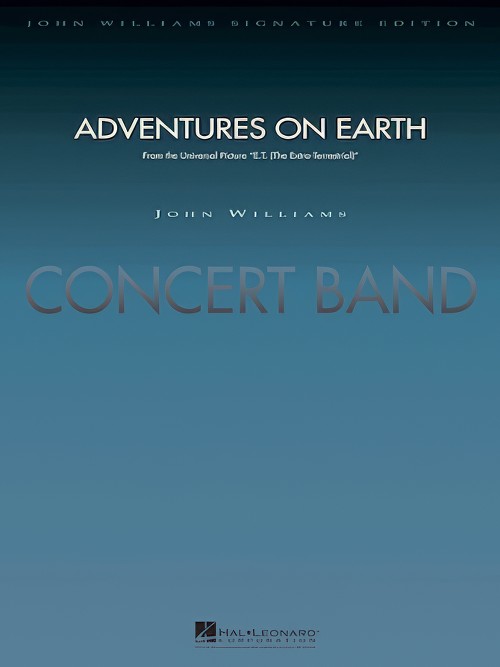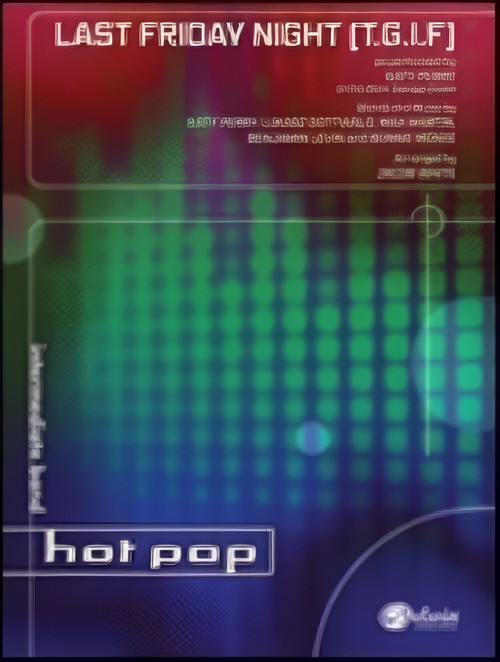Results
-
£79.00
You CanT Hurry Love - Holland
Estimated dispatch 7-14 working days
-
 £367.99
£367.99Adventures on Earth ( from E.T. ) - John Williams
Dynamic suite for concert band from the landmark Steven Spielberg classic film! Performance time - ca. 10:00
Estimated dispatch 7-14 working days
-
 £6.99
£6.99Concert Time (Baritone T.C.) - Nowlin & Pearson
Concert Time, by Bruce Pearson and Ryan Nowlin, is a collection of twelve songs written for beginning or young band. An excellent compilation and variety of music styles, Concert Time includes festival pieces, concert marches, classical transcriptions, lively lighter songs, and originals. With accessible, grade-appropriate rhythms, highlights also include clarinets staying below the break in each song, melodies are written in every section, and the Drums, Mallets, Auxiliary Percussion, and Timpani are all in one book. With reinforced orchestration throughout the ensemble, each piece was composed or arranged with the young player in mind and will prove to be accessible and musically satisfying to the player and the audience. Each concert time part book includes a Fingering Chart and Preparatory Melodies. Concert Time is part of the Tradition of Excellence series and is an outstanding addition to any band curriculum. Includes: The Holidays are Here; North Winds; A Journey Together; Fire Rock; Home Days; One of These Days; To the Castle; The Earle of Oxford's Marche; On the Carousel; Practice Report Blues; Psalm and Dance; Steadfast Overture.
Estimated dispatch 7-14 working days
-
 £70.00
£70.00Last Friday Night (T.G.I.F)/The Edge of Glory (Concert Band - Score and Parts) - Lopez, Victor
Recently, the ladies of pop are ruling the charts and veteran writer Victor Lopez has selected two very playable titles from Lady Gaga and Katy Perry's repertoire that will rock your audience. A dynamic duo of artists and tunes. Recognised by students and audiences alike, this pop duo is certain to please!Duration: 5.00
Estimated dispatch 7-14 working days
-
 £53.50
£53.50Adventures on Earth (from E.T. The Extra-Terrestrial) (Concert Band - Score only) - Williams, John - Lavender, Paul
Dynamic suite for concert band from the landmark Steven Spielberg classic film!
Estimated dispatch 7-14 working days
-
 £367.99
£367.99Adventures on Earth (from E.T. The Extra-Terrestrial) (Concert Band - Score and Parts) - Williams, John - Lavender, Paul
Dynamic suite for concert band from the landmark Steven Spielberg classic film!Duration: 10.00
Estimated dispatch 7-14 working days
-
 £2.50
£2.50God Bless America (SA(T)B Choral Octavo) - Berlin, Irving - Eilers, Joyce
Joyce Eilers and Paul Jennings have combined their considerable talents to create a setting of Irving Berlin's God Bless America that is ideal for younger bands, string groups and choirs in schools. Duration: 2.45
Estimated dispatch 7-14 working days
-
 £45.95
£45.95LAST FRIDAY NIGHT (T.G.I.F.) (Kate Perry) (Concert Band) - White, Jacob
The fresh, dance-pop feel of this catchy, toe-tapping tune is sure to be a hit with your concert ensemble!
Estimated dispatch 7-14 working days
-
 £47.52
£47.52Meet Mr. T (Concert Band - Score and Parts)
Written for the fine middle school band program in Corning, New York ("The Crystal City''), this is Edmondson's most dramatic and memorable work for this level to date. Exciting percussion, moving themes and a variety of textures and colors highlight this outstanding work for young band.
Estimated dispatch 7-14 working days
-
 £59.40
£59.40T. D.'s Boogie Woogie
A classic arrangement from the great "big band era" that gives your whole concert band a chance to shine. Includes electric bass and drum set parts to insure an authentic performance and the trombone solo is written out in the Tommy Dorsey style to help your lead trombonist Andy has taken a classic and made it very playable with a little work, you'll see why this chart REALLY SWINGS!
Estimated dispatch 7-14 working days
